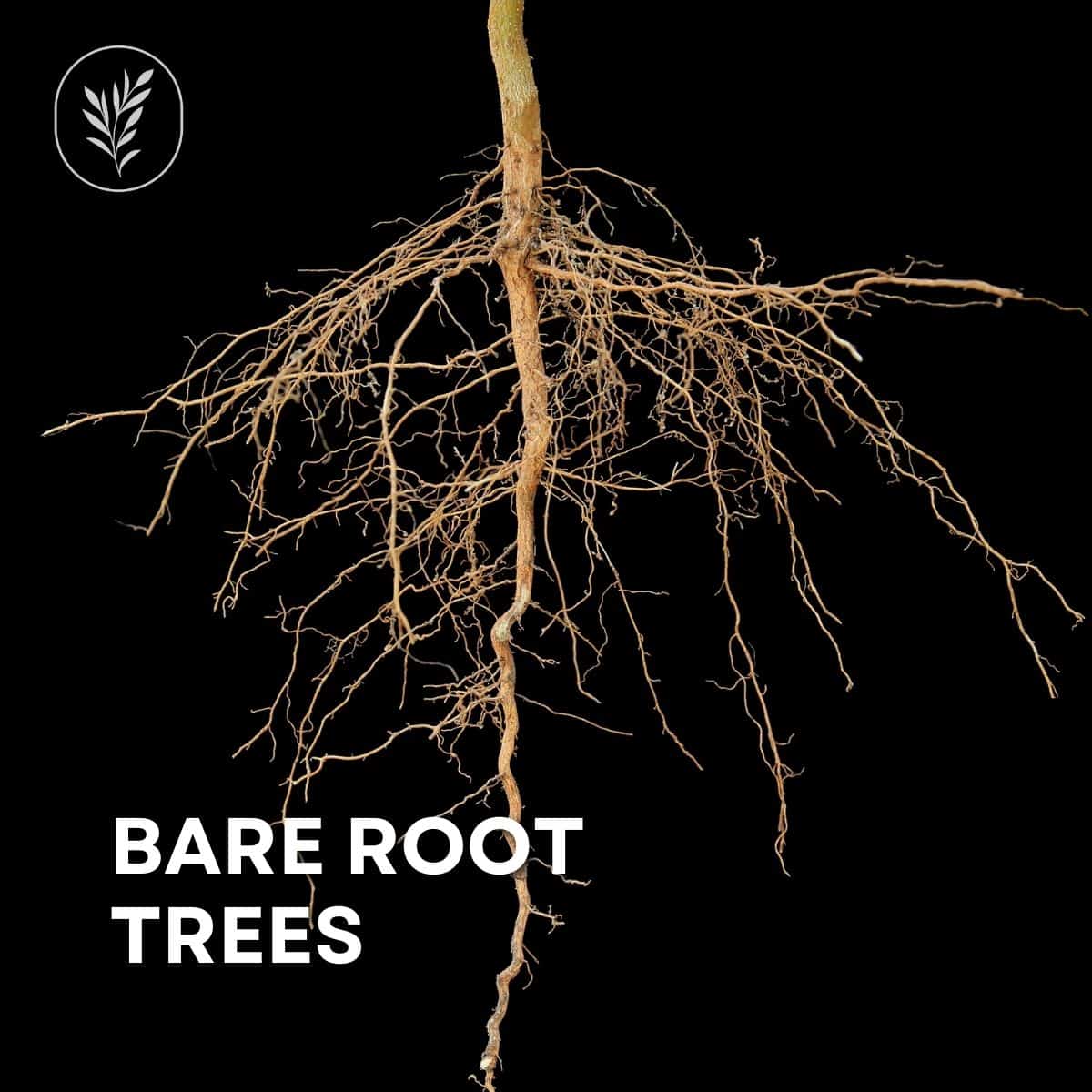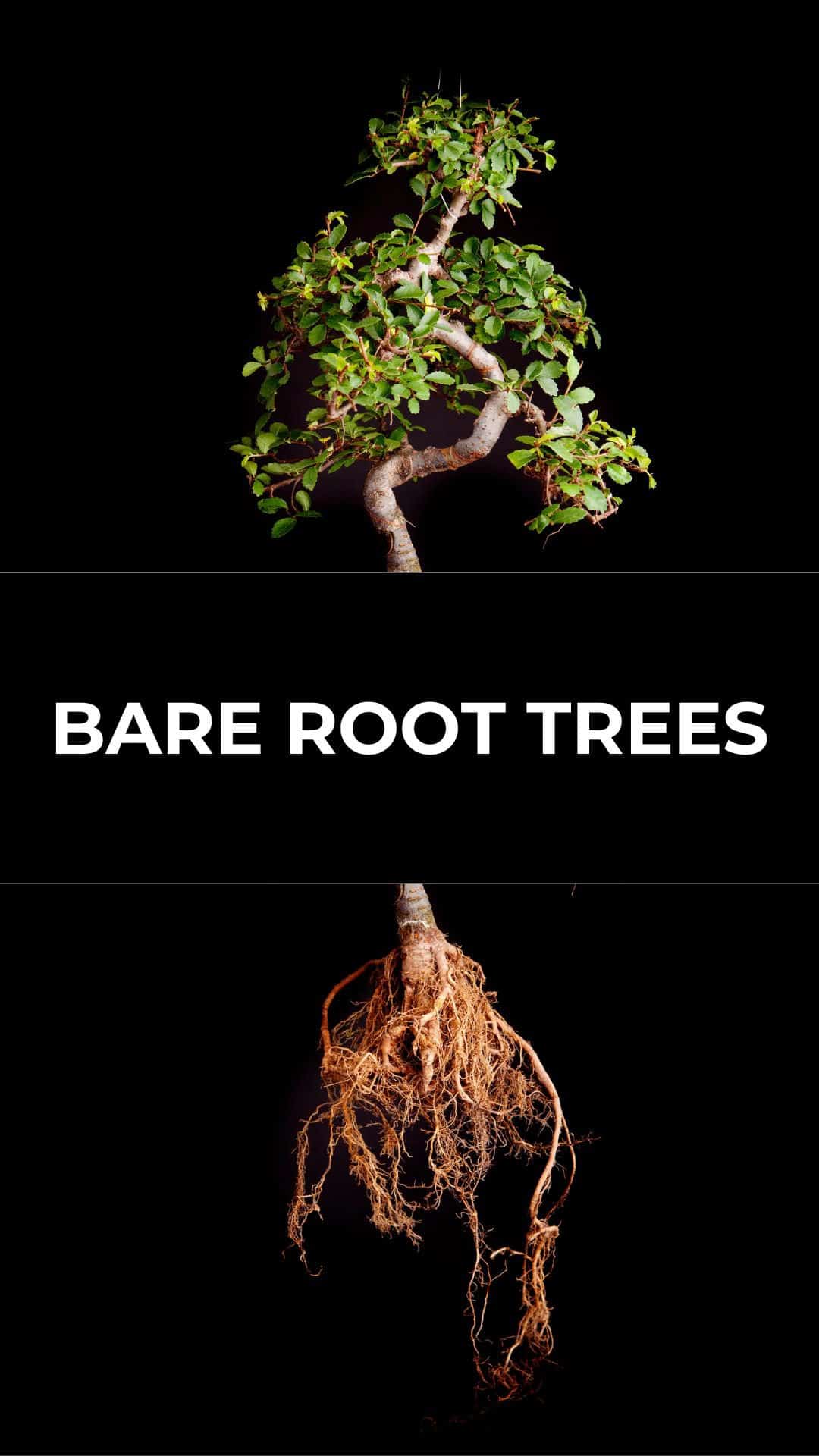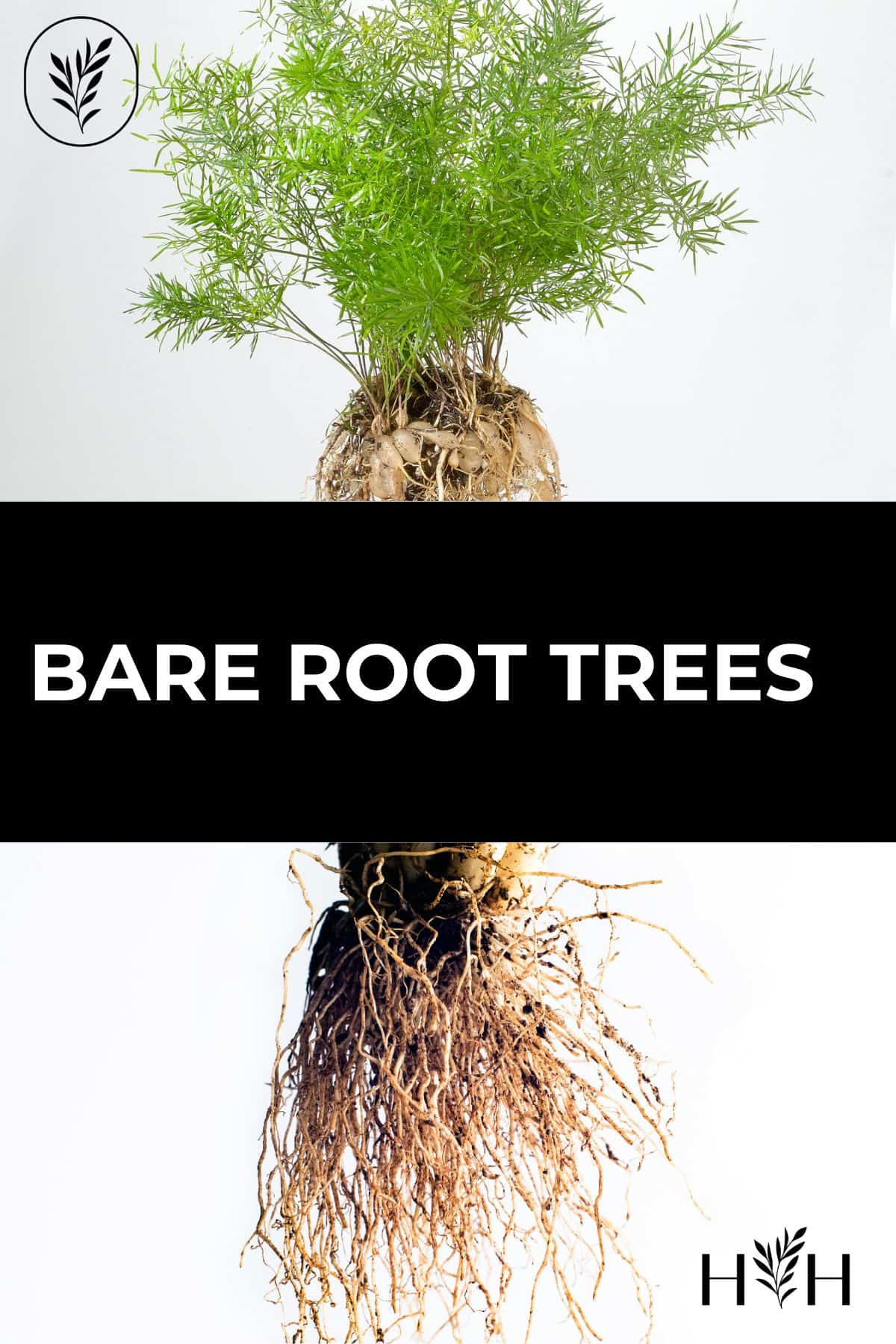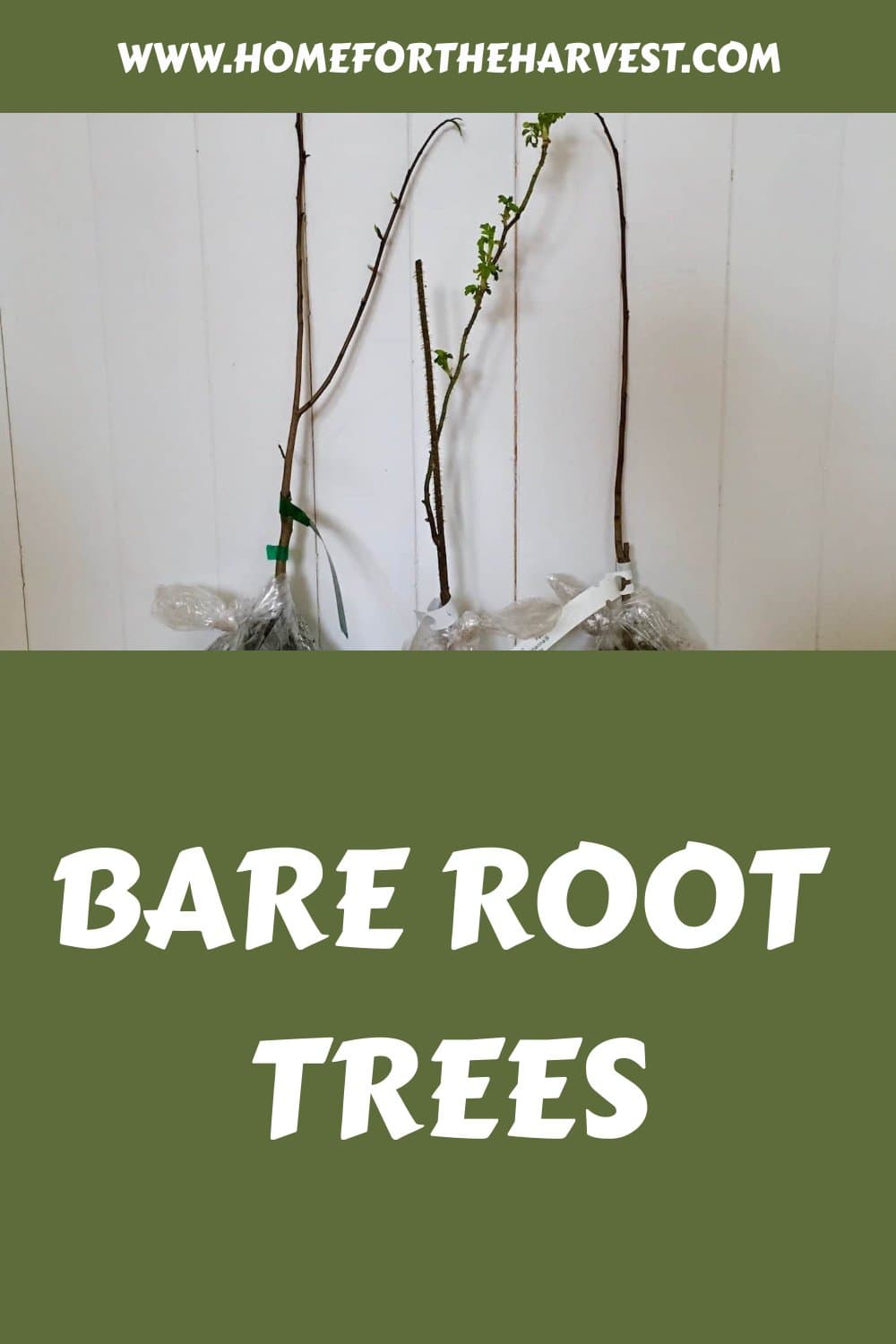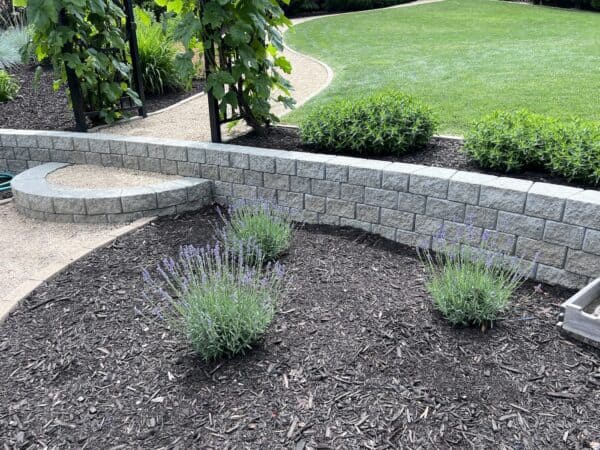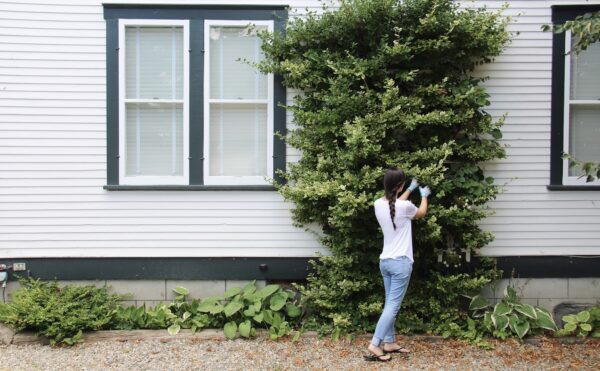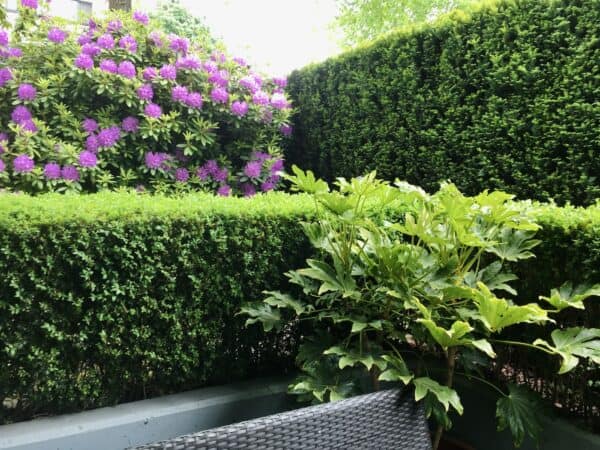Have you ordered trees online before? If not, you may be wondering what it’s like to buy trees over the internet. Most trees and shrubs purchased over the internet are shipped to customers as bare-root trees. Bare root trees can be very high quality, adapting to their new home in your yard quickly when cared for correctly.
What is a bare root tree?
Bare root trees are young trees that are shipped with little to no soil around the roots. Because they are shipped during dormancy, a bare root tree will generally look like a stick with some roots on one end. The roots and residual soil are often wrapped in a plastic bag for shipping.
Although bare root trees look a bit odd when they arrive, they are often quick to establish in their new environment. Bare root trees are also less expensive than conventionally packaged trees in pots. Lastly, a greater variety of trees are available in bare root form due to their ease of shipping from faraway locations.
Basics about buying bare root trees online
Trees that are shipped in bare root form are generally deciduous trees that lose their leaves in the wintertime during a period of dormancy. At the nursery, the trees are dug up after they go dormant (usually in the fall). The roots are then wrapped up with a bit of moist soil or sawdust and then placed in a cool storage location to await shipping.
Once the trees are ordered online (or over the phone/mail), they are packed up into long cardboard boxes and shipped to customers using express shipping options. Shipping generally occurs in the late winter to early spring to coincide with the dormant period for the trees.
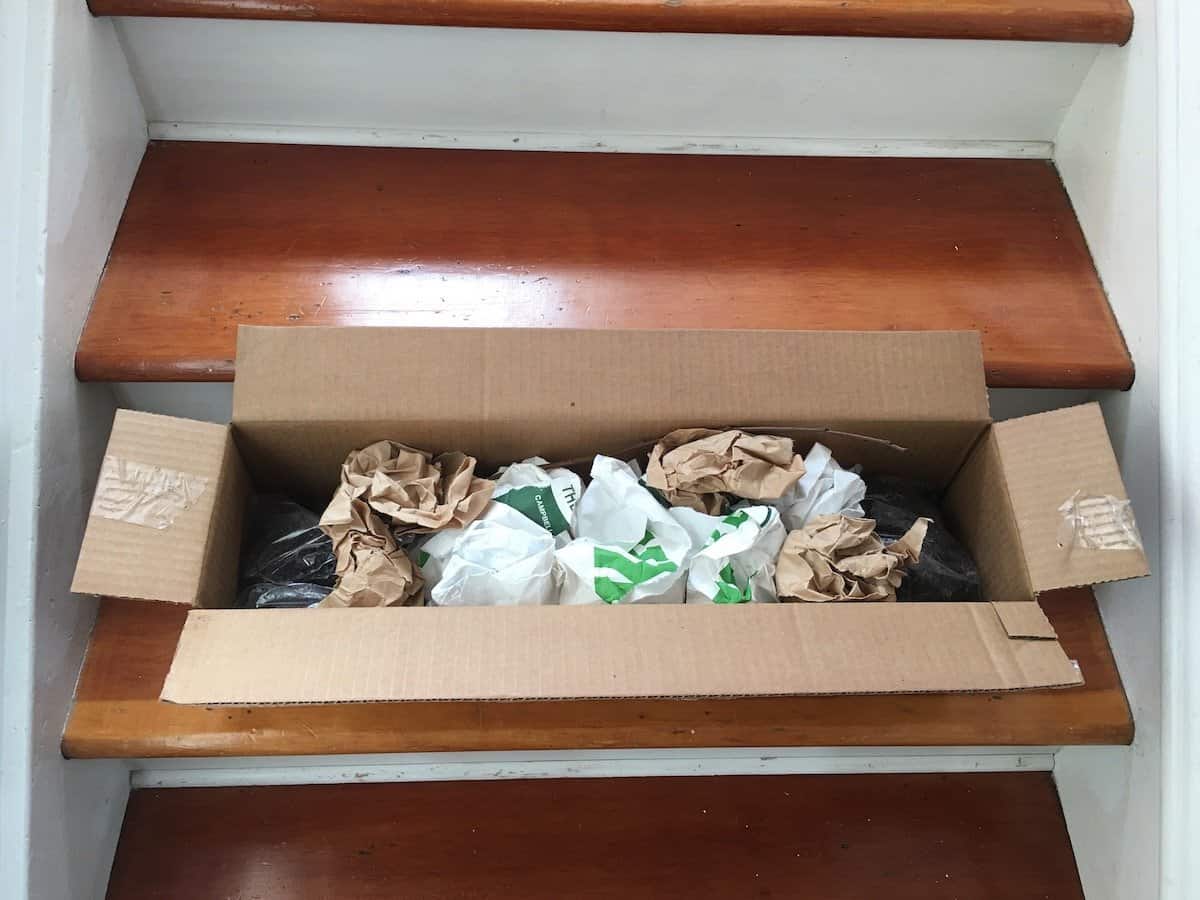
What it’s like to receive a bare root tree in the mail
Bare root trees ordered online are great fun to receive in the mail. It’s amazing to get a tree from many miles away shipped straight to your home, and usually for a very reasonable price.
Although it is possible to order evergreens, most bare-root trees ordered online are deciduous trees (which lose their leaves in the winter). Deciduous trees respond better to shipping because they do not lose much moisture during the process (because they don’t have leaves while they are dormant).
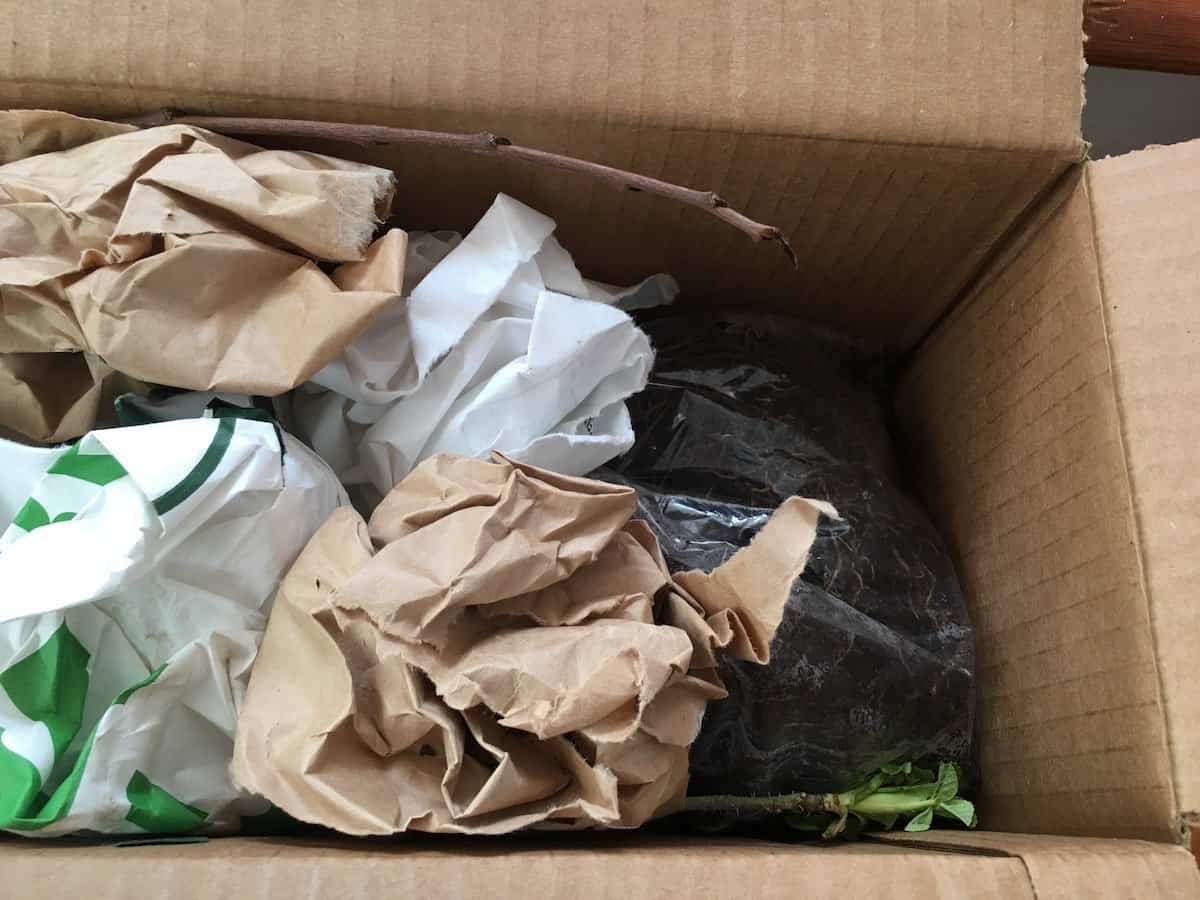
What to do when your bare root tree order arrives
Open the box immediately to inspect your trees. Remove all packing materials from around the trees and roots. If the trees look like they may have been damaged during shipping, take a photo immediately to record and report the damage.
Upon receiving your trees, the most important thing for the health and success of your trees is to check the roots for dryness. Dry roots are not good! If the roots look dry, soak them for eight hours in a bucket of water (immediately). Also, look for signs of life such as buds. There may even be a few small green leaves if the tree has broken dormancy during shipping.
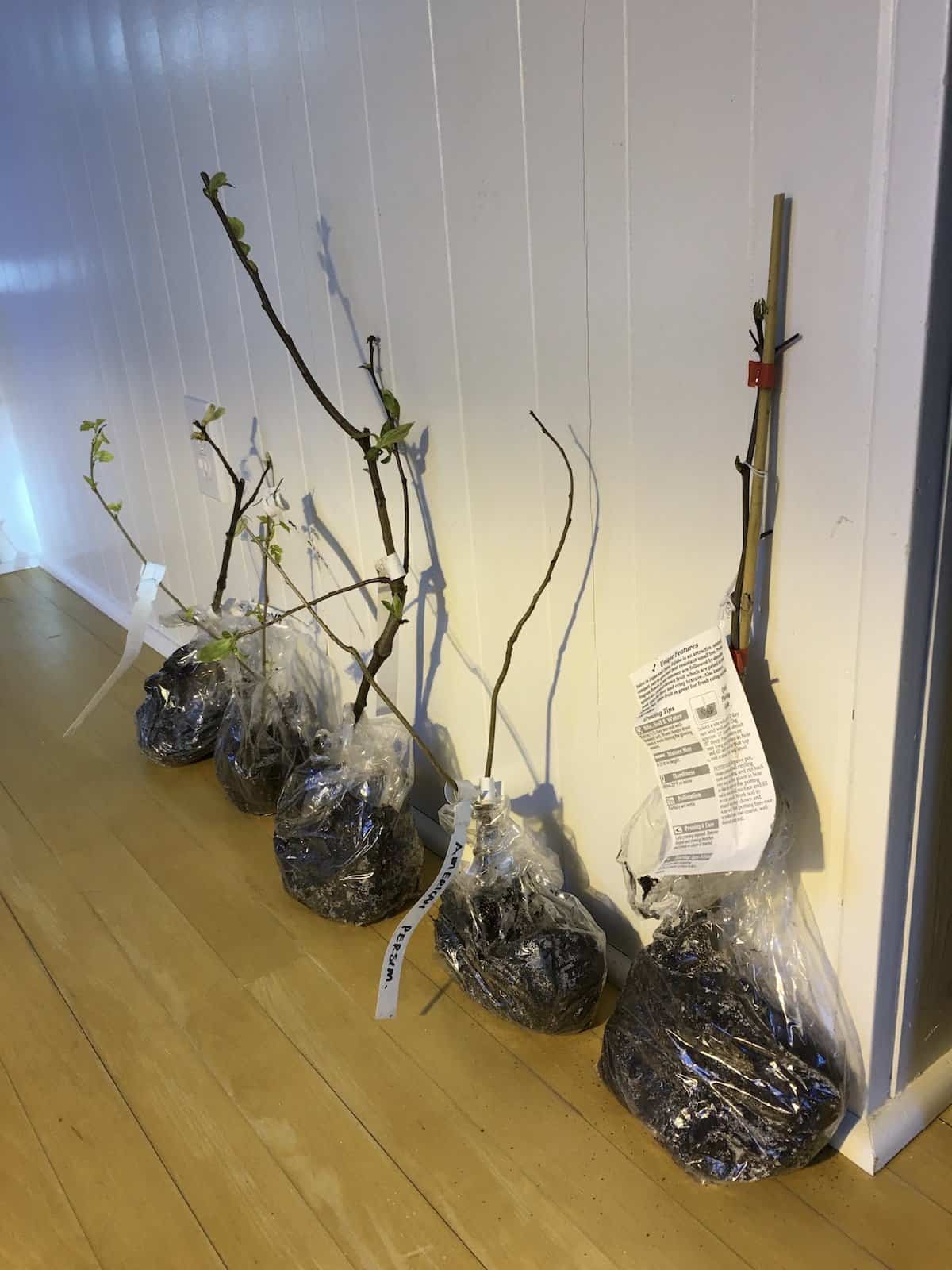
Planting bare root trees
Plant your bare root trees as soon as you receive them (if the ground is unfrozen in your area). Before planting, check the forecast and weather records from previous years for upcoming weather patterns in your area. Do not plant your trees outdoors yet if there is a chance your area could still experience particularly harsh winter conditions.
If the ground in your yard is frozen (or completely saturated with water) when you receive the order, the tree may have to be stored until it is possible to plant it in the ground. Dormant trees (no leaves or other signs of growth) can continue to be stored in cold storage or in sheltered/mild outdoor areas. Keep the roots moist by repacking them with the shipping material, moist leaves, or moist shredded newspaper.
Bare root trees can also be planted in containers with some moist potting soil if the ground is still frozen. Trees can be temporarily potted up and placed outdoors in a sheltered area. If you are expecting harsh freezing weather or if the trees are exhibiting signs of spring life such as green leaves, keep the trees indoors and ease them out of dormancy where they are protected. Keep indoor trees well-watered and mist them with water to combat low indoor humidity.
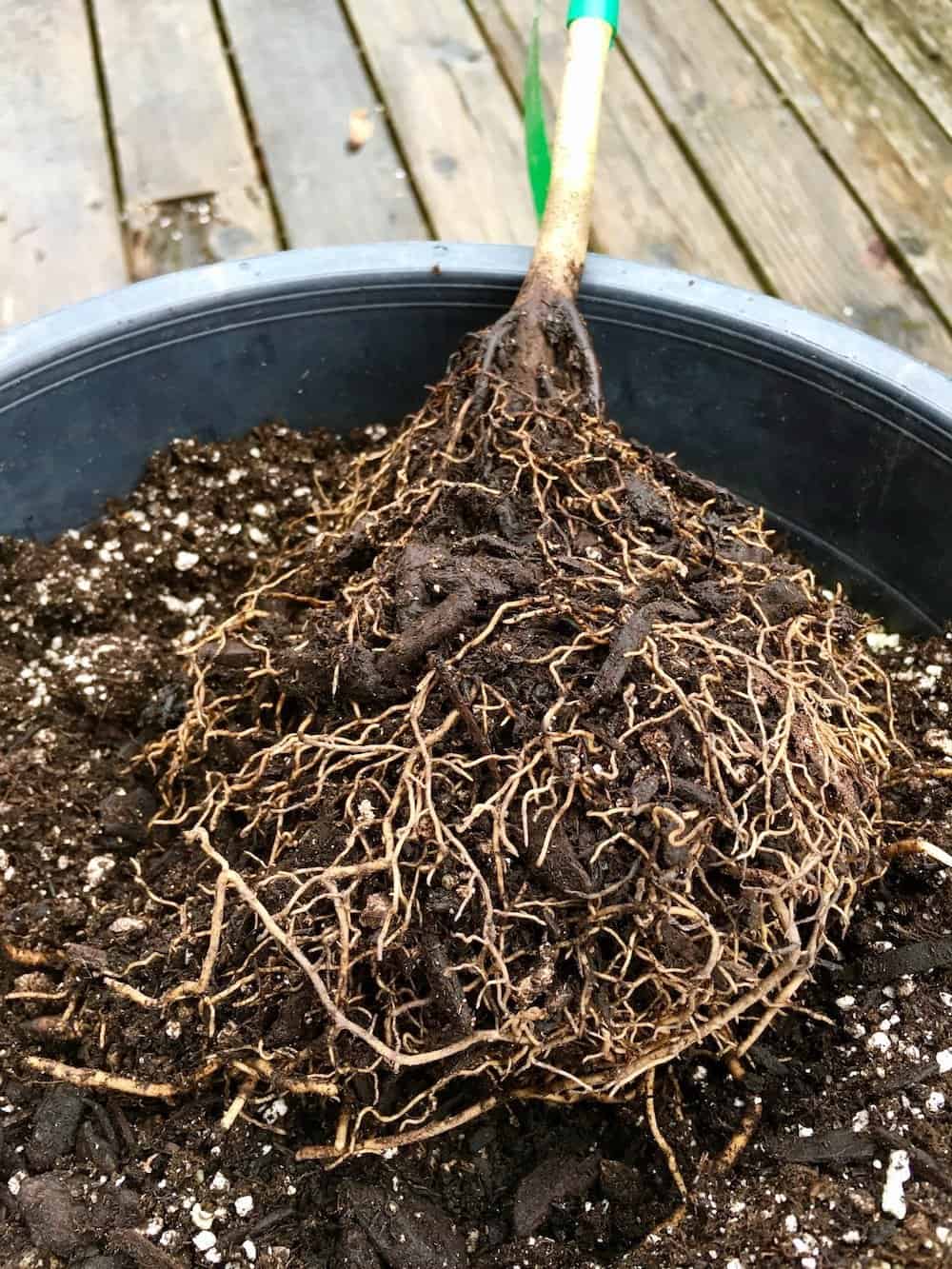
Supplies for planting bare root trees
- Bare Root Tree
- Bucket of Water
- Shovel
- Hose or Watering Can
- Organic Mulch
- Protective Cylinder (Optional)
- Stake (Optional)
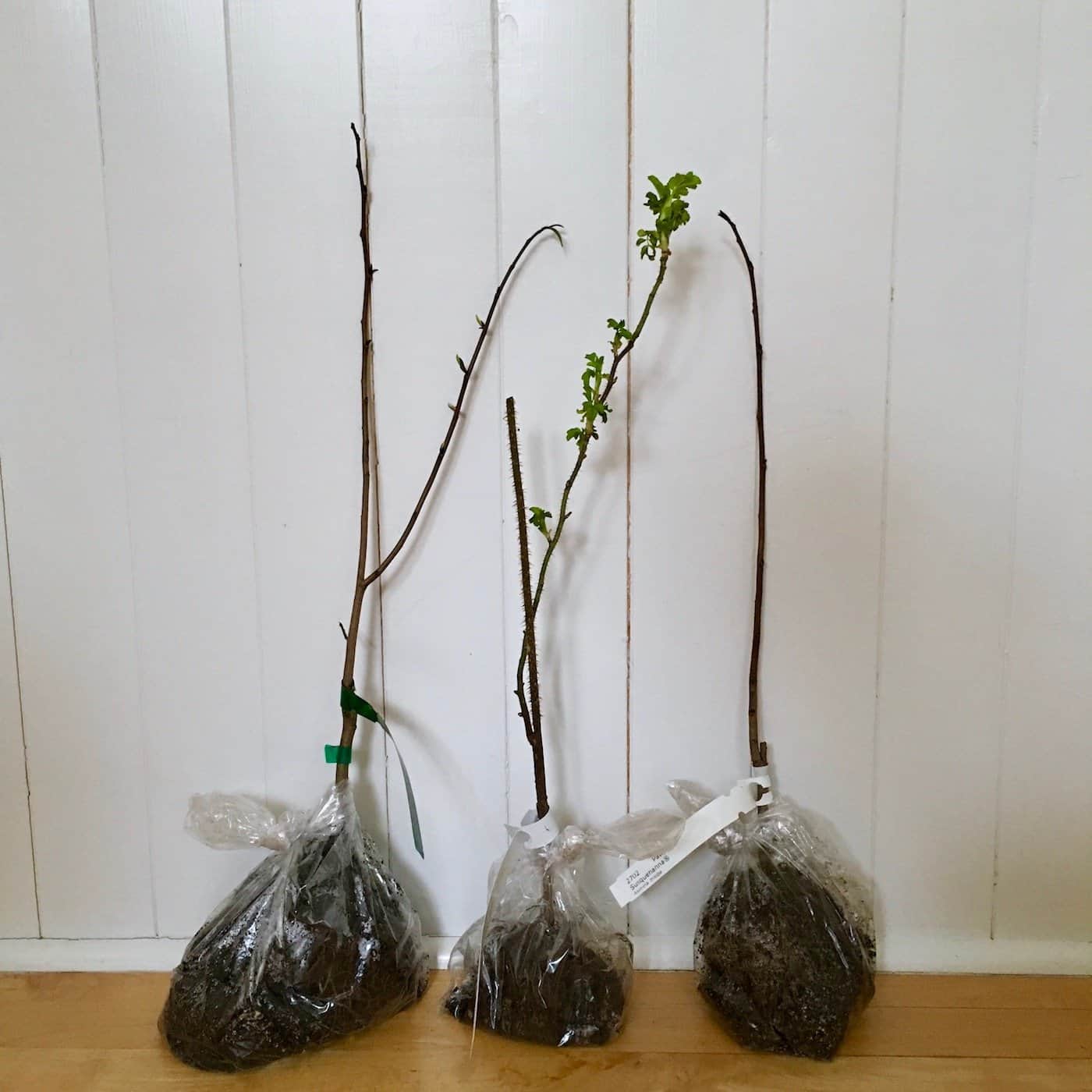
Steps: How to plant bare root trees
- Inspect the tree’s roots for moisture. If the roots look all dry, soak them in a bucket of water for a few hours. Transport the tree to the planting location in the bucket of water to prevent the roots from drying out.
- Dig a wide, shallow hole in the ground at the desired planting location. The hole should be 2-3 times the width of the root ball, but no deeper. The hole does not need to be quite as deep at the sides as it is in the middle.
- Use the shovel to rough up the soil on the sides/bottom of the hole.
- Don’t “improve” the soil in the hole with fertilizer. This will encourage the tree to stay within the hole. Use the soil that was removed while digging the hole to backfill it. The tree will then be more encouraged to develop a healthy root system outside the perimeter of the original hole. Organic fertilizers such as compost can be added as a top dressing later on once the tree becomes oriented to its new environment.
- Place the tree into the hole. Take care to observe the formation of the branches when placing the tree so it can be placed in a thoughtful manner among the existing landscape. Spread out the roots onto the soil at the bottom of the hole.
- Place a bit of dirt around the tree to hold it in place. Gently push the soil into the voids between the roots to ensure no air pockets are left.
- Backfill the rest of the hole so the soil level matches the original soil level on the plant. This can be a bit hard to tell with bare root trees but do your best not to put the soil up too high. Do not cover anything that looks like it could be “bark”. Just cover the visible roots and stop there. Lightly compact the backfilled soil (gently!).
- In dry areas, it can be helpful to plant the tree in a bit of a basin to help catch any available rainwater.
- In wet climates, plant the tree on a small mound to keep the roots from being drowned.
- Water the newly-planted tree thoroughly to ensure the backfilled soil and surrounding area are saturated.
- If your area has a rodent problem, consider surrounding the tree with a protective cylinder to keep rodents from chewing on the bark.
- Stake the tree if it is more than 2” high, or in particularly windy areas. The stakes can be removed after the roots grab onto the existing soil.
- Mulch the area with compost or other organic mulch. Do not place mulch up against the tree itself. Mulch placed against the tree’s bark can cause it to rot. Keep the mulch to the area around the tree, rather than directly against it.
- Keep the tree watered consistently throughout its first growing season to help it become well-established. Water it weekly, or as needed. You might consider installing a drip irrigation hose to the tree so that your tree is watered automatically on a predetermined schedule.
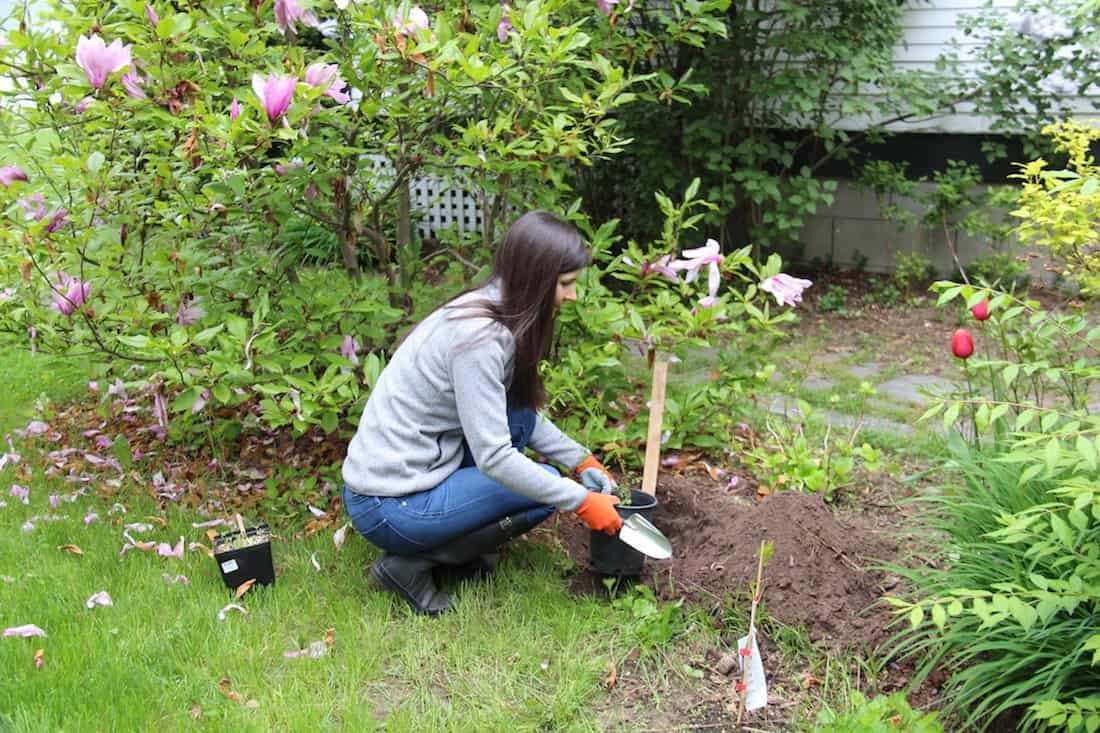
Caring for your bare root tree after planting
Watering your new bare root tree is especially important during the first few seasons following planting. Keep the tree well-watered, particularly during hot spells, to help it become established. I’ve found that the best way to do this is by installing automated drip irrigation to the tree. Installing your own drip lines is quick, easy, and very affordable. It will help you protect your investment, while also being very efficient in terms of water use. Check out these instructions on how to install your own drip irrigation.
In the spring, give your new tree a light feeding with some organic fertilizer. I like to use a nice top dressing of homemade leaf compost along with some worm castings. These are two organic soil amendments that will help to feed your tree without synthetic chemicals.
References
- Cornell University: Planting a Bare-root Tree Seedling
- Iowa State University: Planting Bare-root Trees vs. Container-grown Trees
- University of Georgia: Planting Your Bare-Root Fruit Tree
- Penn State University: Planting Bare-root Tree Seedlings in Spring
- Oklahoma State University: Planting Trees and Shrubs


